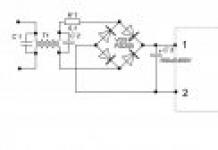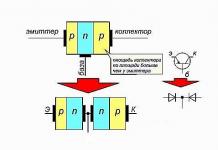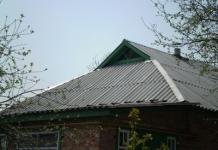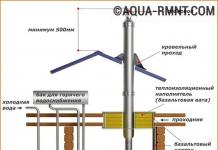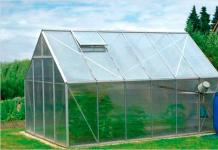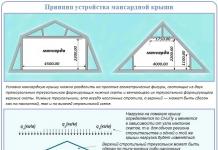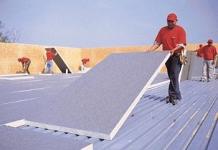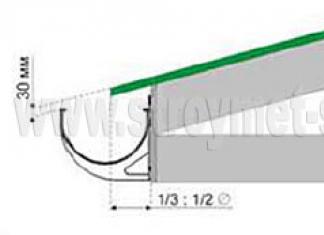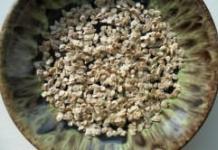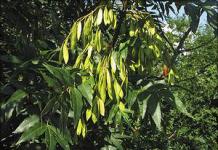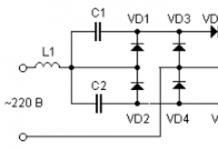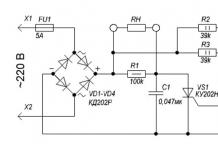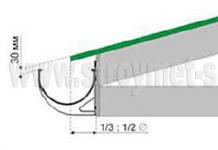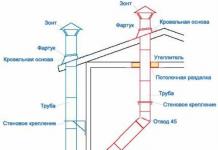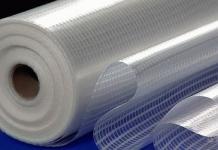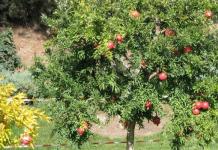Crumbly tasty potatoes bought at the market can settle in the garden. Only a few tubers are needed to plant a couple of buckets in a year.
How does the reproduction of potatoes occur? What are the methods and how are they used in the agricultural sector?
A good variety of potatoes that suits the gardener in all respects is quite difficult to find. In practice, long searches are not always successful.
Any variety of potato should not be grown for more than ten years. It needs to be replaced with another, more stable one.
If there is an opportunity to purchase or receive as a gift at least one tuber of a wonderful potato of a new variety, there is no need to refuse. From one tuber you can get about two buckets of excellent seed material per season.
Potato is a plant from the nightshade family. At home in South America, in a warm and humid climate, it grows as a perennial.
If you conduct an experiment and leave the plant in the soil, then under the conditions of a warm winter and a large snow cover, it will begin to develop again in the spring.
Such winters are quite rare. Even in European countries with a warm climate, the weather has recently been giving not very pleasant surprises in the form of snowfall or frost.
As a perennial, the potato has not gained popularity because its modified roots in the form of tubers are used for food. It is for this harvest that they are planted annually. For harvesting, the entire bush is dug up and cannot grow further.
Potatoes can be propagated vegetatively or by seed. Vegetative method - using part of the plant.
Seed method - ripened seeds.
Potatoes are good because they can multiply in all ways. Parts of the plant are suitable for this:
- Roots. It is on the roots that tubers form. They are modified roots.
- Pieces of tubers with eyes are excellent material for.
- Stem. If you cut off the tops of green stems with leaves from a potato bush, then they take root perfectly. In their place, new shoots are formed, which can also be used to propagate potatoes.

This procedure can be carried out up to three times per season. Each bush produces several good tubers. They, in turn, are also used to obtain seed material.
Seeds. Ripened seeds from potatoes are harvested in the fall. To do this, leave one potato bush untouched. After harvesting the main crop, the seeds are harvested, which are enclosed in green berries. They are dried and small seeds are removed, which are stored in a dry, frost-free place until sowing.
This method is used quite rarely due to low efficiency and high labor intensity. For experimenters and gardening enthusiasts, growing any plant from seed is a real challenge.
Long and painstaking, but quite realistic to acquire new varieties with the help of seed propagation.
Most often, seed sowing is used by breeders to develop new varieties. They pollinate one variety with another and produce a third, which is then tested for disease and weather resistance.

Potato seeds are sown and germinated at home, so you can start the process even in January with additional lighting. After 10-14 days, the first shoots appear. From the moment of their appearance to the planting of seedlings in the ground, you need to count another one and a half months.
When sowing seeds in January, already in March it will be possible to use the tops of the plant for cuttings.
A month and a half after planting the seedlings in the ground, the formed tubers can be carefully removed from the soil.
By dividing them into parts with eyes and planting them in already prepared and warmed soil, you can get additional tubers.
This accelerated method is not often used, but it is quite effective.
Vegetative propagation methods
If it is not possible to grow potatoes with whole tubers, then it can be propagated using one of the following methods:
Eyes. The potato tuber is placed on the roots of the plant. The place by which it is attached to them is called the umbilical cord. The opposite side is the top of the tuber. At this place is the largest number of dormant buds, which are called eyes.
With a sharp knife, eyes are distinguished from the tuber and placed for germination in boxes with loose soil. The thickness of the soil layer above them should be about two centimeters. Landings need to be constantly moistened and hilled after the appearance of sprouts.
Plants grown up to 10 cm can be planted in open ground. You can plant eyes immediately in a permanent place, subject to sufficient fertility and friability of the soil.
Such plantings can be carried out at a soil temperature of at least 10 ° C.
An important condition for tender and fragile plants is protection from frost. The best temperature for 16-22 °C. Tuberization occurs most intensively at night temperatures of 10-13 °C.
seedlings. The tubers are laid out in one layer in a box, sprinkled with sawdust, moistened with water. When the sprouts reach a height of 5-7 cm, they, along with the roots, are carefully broken off from the tuber.

Such a sprout can already be planted in the ground, provided that soil moisture is constantly maintained.
The tubers are left in the same substrate and germinated again. This can be done three or four times.
The last sprouts are left on the tuber and planted in the ground along with its pieces. Planting is best done on cloudy days. The distance between plants in a row should be 5-10 cm.
Between the rows it is better to make a gap about half a meter in size.
No need to save on row spacing. A plant that is provided with good lighting and sufficient area will give a much larger yield than one hundred develops in cramped conditions.
cuttings. Very interesting and unusual method. The tuber of an experienced potato is planted in the soil in the usual way, like the rest of the mass.
The next steps are very important. These are the tips of a professional who is engaged in breeding work and methods of mass propagation of potatoes.
You need to do three mandatory top dressing:
The first top dressing is made after emergence of shoots. This happens a week or ten days after planting. Fertilizer for potatoes or simply a complete mineral remedy such as Kristalina is added to the water for irrigation.
The second feeding is done two weeks after the previous one. During this time, the plant must be spudded twice.
For top dressing, you need to prepare fertilizers:
- ammonium nitrate
- Superphosphate
- potassium sulfate
All ingredients should be in the same amount - one tablespoon with a slide or a matchbox. Then they need to be mixed and dissolved in ten liters of water.

Under each plant, it is enough to pour one glass of this solution.
Third feed. Six weeks after the previous one. The components are the same, only the concentration should be slightly higher and one and a half glasses of this liquid should be poured under each plant.
In the interval between the second and third dressings, six weeks after germination, the top of the plant must be pinched. After this procedure, side shoots begin to grow. They are then needed as raw materials for the manufacture of cuttings.
This technique can be repeated after another 8 weeks and get more additional shoots.
Cutting cuttings is carried out during flowering, but not at the beginning, but when all the buds open.
Using a scalpel or an ordinary blade, side shoots are cut off in the middle of the plant. Then they are divided into cuttings. Each cutting must have one leaf and one internode.
After the cuttings are cut, they must be kept in Kornevin's solution for several hours according to the instructions.
It is necessary to root the cut pieces of the stem in boxes with clean and calcined river sand. The leaf of each cutting should remain completely above the surface. The stem, together with the bud under the leaf, must be completely covered with sand.
8 weeks after cuttings, small nodules can be removed for storage. This size will be enough to grow a good potato bush from it next year.
There are many ways and you can choose the most suitable from them.
Further care of sprouts
After transplanting into the ground, with any method, certain conditions must be observed:

Watering. The soil in the bed with seedlings should be constantly slightly moistened. Many helpers have been invented to help the gardener. One of them is the drip irrigation system. Landings are moistened as needed without the participation of the owner. He only needs to turn on or off the water supply in time.
Keeping the soil loose. To do this, you can use directly loosening the upper soil layer. This procedure must be done very carefully so as not to damage the small and delicate roots. If you think about the issue of mulching, you can avoid the need to carry out such work.
As mulch, mowed grass, wood chips are most often used. The layer of mulching material must be at least 10 cm thick. This will protect the plant from overheating, and the roots from drying out.
Hilling. This is a prerequisite for good tuber formation. When shoots appear, hilling is carried out regularly every two weeks.
Pest control. The danger to potatoes is:
Wireworm. Liming and digging the soil helps against this pest.
Nematode. The effectiveness of the fight against this pest depends on the speed of action. When the leaves of the potato bush turn yellow and wrinkle, the plant should be removed as soon as possible. Crop rotation helps keep these pests from accumulating in the soil.
Colorado beetle. This is the "enemy number 1" of the potato. At present, there are many drugs for it:
- Spark
- Aktara
- Actellik
Compliance with all procedures will provide the vegetable grower with good seed material in sufficient quantities.
Varieties
- Pomegranate
- Crystal
- Lasunok
- spark
- Loshitsky

The least affected by late blight:
- Gatchina
The most resistant to potato cancer are:
- Falensky
- Specula
Taste is very important for own consumption on a small scale.
From this point of view, you need to pay attention to the varieties:
- Hope
- red dawn
- Zhukovsky
- Blue
While watching the video, you will learn about.
By purchasing several tubers of a good variety of potatoes, the summer resident often seeks to propagate it as soon as possible. There are several methods of accelerated propagation of potatoes available to everyone. To breed a new variety for you using accelerated methods, it is enough to purchase 3-5 tubers in order to get a high yield of seed potatoes during the year.
Of the existing methods of propagation of varietal potatoes, the following are the most accessible:
- propagation of potatoes by shadow and light sprouts
- propagation of potatoes by tuber division
- propagation of potatoes by layering
- rooting tops and axillary shoots.

In this case, potatoes are germinated in the light or in the dark at a temperature of 14–18 degrees. When germinating in the light, strong and powerful sprouts of green or purple color are formed, when germinating in the dark, more fragile shady white sprouts are formed. Best results are obtained when germinating in the light.

Germinated tubers should be slightly damp. To protect them from wrinkling and drying out, it is necessary to spray the tuber with water every 3-5 days.
Good results are obtained when sprouting tubers in open glass jars or plastic bags with slots. You can shoot sprouts from one tuber 2-3 times. Removed sprouts should be immediately planted in the ground. With a small number of sprouts, they can be planted in containers with earth or peat or in cups and grown in an apartment.
How to separate a sprout from a tuber?
To separate the sprout, taking the tuber with one hand, take the sprout at the base with the other hand and, keeping it motionless, slightly rotate the tuber around the axis of the sprout. The sprout is easily twisted. It is impossible to cut out the sprouts, as this damages the resting buds that remain in each eye after the sprout is removed. With repeated germination, the dormant buds wake up, and new, full-fledged sprouts develop from them.
After the first and second removal of sprouts, the tubers are left to germinate the next ones. After the third time, it is better to plant the tuber in the ground in the usual way. Depending on the number of harvests, tubers germinate on average from one to two months.
Sprouted sprouts are planted at a distance of 5-6 cm from each other. The depth of planting sprouts depends on their size, but the top must necessarily protrude above the soil by about a quarter or a third of its length. The earth around the sprout is tightly pressed with fingers.
After planting, the sprouts should be well watered and shaded from the sun for several hours. After about 18–25 days, seedlings can be planted in open ground. The distance between sprouts in a row should be 20 cm, between rows - 60 cm. Before planting, seedlings are watered abundantly. It is also a good idea to add a handful of humus to the wells. When planting, the green part of the seedlings deepens into the soil by about 2/3 of the length.
Planting care is standard: watering, loosening row spacing, weeding and hilling.

Well germinated tubers that have formed up to 12-15 sprouts 3-5 cm long must be cut into pieces so that each has one sprout. The resulting part of the tuber is planted in a hole and covered with earth.

It should be noted that sprouts require more careful care than when planting whole tubers. At first, it is necessary to constantly monitor the humidity and regularly loosen the soil.

The tubers are germinated in the light for 25-30 days according to the method described in paragraph 1. The tubers germinated in this way are planted tops up at a distance of 2-3 cm from each other in rows using warm greenhouses or boxes on the windowsills. The land for germination should be good, rich in humus. From above, the tubers are sprinkled with soil 5–6 cm and watered with warm water (20–25 degrees). It is advisable to cover the top with a transparent film.
The optimum soil temperature should be 18-24 degrees. Do not allow the potatoes to soak, otherwise they may begin to rot. Under these conditions, strong shoots should appear on the 8th - 10th day. The film is removed (if it was covered) and, as soon as the seedlings reach a height of 5-8 cm, they are removed from the ground. Small stems (shoots) are carefully separated from the tuber along with the root by twisting as described above. Layers are planted in the ground at 2/3 of their height, and the tubers are planted again for further layering.
When propagating potatoes by layering, up to five removals can be carried out and up to 20 new layers can be obtained from one tuber. The uterine tubers with the remaining last layers are also planted in open ground. On average, from one layer, you can get 2–6 tubers with a total weight of up to 500–600 g, depending on the variety. Layers taken in the spring cannot be immediately planted in open ground due to the possibility of night frosts. They need to be temporarily buried in boxes on the windowsill. In warm weather, layering is planted immediately in open ground. The distance between the rows is 60–70 cm, and in the rows between the layers is 20–25 cm. Potatoes can be planted in a checkerboard pattern in increments of 25 × 25 cm. The width of the beds is 60 cm, the row spacing is 60 cm. 1 liter of water.

Potatoes tolerate transplantation very well in childhood, so this operation can be carried out without any fear.
Propagation of potatoes by rooting tops and axillary shoots

Tubers germinated in the light are planted in greenhouses on well-fertilized beds. After the plant reaches a height of 20 cm, the tops with 3-4 leaves are cut from it with a sharp razor blade. The cut must be carried out quickly, in one motion. It is advisable to keep the tops in a solution of a growth substance (for example, heteroauxin) until roots form, and then plant them in moist soil to an internode depth (about 3-4 cm) in seedling containers with nutrient soil (nutrition area 10 × 10 cm).
You can plant the tops without soaking in a solution of growth substance. In this case, the turntables take root and grow usually only on the 7th-8th day.
After 12-15 days after removing the tops, axillary shoots are cut from the uterine tubers, which are also used for planting in open ground. You can cut axillary shoots several times. On average, up to 400-500 tubers can be obtained from one plant in this way.
The described methods for accelerated propagation of potatoes are quite simple and can be applied to any summer cottage, even by novice gardeners.
It is known that the yield of potatoes largely depends on the seed qualities of the planted variety. Many varieties degenerate over time and lose their valuable qualities, the yield decreases. This is due to the annual accumulation of viral infections in them. However, it is much less in the buds of tubers, young seedlings and stem tops. To reduce the harmfulness of a viral infection, there are quite simple ways to separate young organs from the uterine tuber and plant.
Reproduction of potatoes with eyes
One of these methods can be the preparation of tuber eye buds. It is performed with a cork drill or a sharp knife with an elongated front of the blade. The thickness of the disc cut from the tuber should not exceed 10 mm. It should fit the whole eye. Up to 6-7 disks can be obtained from one tuber, which are then placed on filter paper or blotting paper and withstand on it for 2-3 days until the formation of a layer of wound periderm. For prevention, such discs are daily put for 2-3 hours in conditions where the temperature is maintained at 40 degrees, and the rest of the time they are kept at a temperature of 16-20 degrees.
In this case, a significant portion of the tuber remains for consumption. Before planting discs with eyes contain in the light on filtered paper, periodically slightly moisturizing. By the time of planting, the disks will already have green seedlings and a root system. planted discs to a depth of 3-4 cm at the same time as the tubers.
Depending on the quality of soil preparation for planting and growing conditions, the yield can be from 500 to 2000 grams per plant (200-800 kg per hundred square meters).
Reproduction of potatoes by layering
 Potatoes can be planted with tops and peels. Cleaning at the locations of the eyes is necessary cutting down thicker layer of 3-4 mm. It is better to place them and keep them until planting on a tray or other container, on damp filtered paper, covering them with glass or film.
Potatoes can be planted with tops and peels. Cleaning at the locations of the eyes is necessary cutting down thicker layer of 3-4 mm. It is better to place them and keep them until planting on a tray or other container, on damp filtered paper, covering them with glass or film.
Quite effectively accelerated reproduction by layering. For this, germinated tubers are closely lay out in boxes with peat or sawdust. From above they fall asleep with a layer of 2-4 cm, watering is carried out as needed. In this case, after 15-20 days, shoots 8-10 cm high appear, which separate from the mother tuber and planted in the ground along with the roots. When planting, watering is required at 0.5 liters per plant. mother tubers use another time or two. The largest yield of 600-800 grams per bush comes from plants from the first harvest. At the same time, potato growers receive a noticeably higher multiplication factor of 1:50, 1:90.
You can lay out the most developed shoots horizontally and sprinkle with earth 4-6 cm. This will lead to the development of an additional number of shoots, obtaining more stolons and tubers.
This can be repeated several times during the growing season. It must be taken into account that in dry years abundant watering is required.
Propagation of potatoes by segments of seedlings
 The next technique can be the preparation of tuber seedlings into segments. To obtain seedlings, tubers within 15-20 days germinate in the dark at a temperature of 20-22 degrees. After this period, the tubers are placed for 8-10 days in a shaded place. The length of seedlings should reach 30-40 mm.
The next technique can be the preparation of tuber seedlings into segments. To obtain seedlings, tubers within 15-20 days germinate in the dark at a temperature of 20-22 degrees. After this period, the tubers are placed for 8-10 days in a shaded place. The length of seedlings should reach 30-40 mm.
Then them separate from the mother tuber and divided into segments, each of which must have a rudimentary bud. The segments are placed on wet filter paper in Petri dishes or other glassware and covered with glass. Before roots are formed, segments withstand with diffused lighting and a temperature of 20-22 degrees.
After the formation of roots, the segments are planted in boxes with well-prepared soil to a depth of 2-3 cm, into which organic and mineral fertilizers are applied.
When the plants reach the phase of 3-4 leaves, they planted into open ground. After planting, plant care does not differ from the generally accepted one. From each mother plant, you can get 50-60 kg of potatoes.
Propagation of potatoes by cuttings
 Potato propagation is a very effective technique. cuttings. To do this, with a plant height of 30-32 cm, tops 6-8 cm long are separated from them, which within 10-12 hours withstand in a solution of heteroauxin (concentration 6-10 mg per liter) for better survival. From one plant you can get 5-6 tops. Their planted into the soil, water abundantly and shade for 2-3 days. Plants grown from the tops form an average of 4-6 tubers with a total weight of 400-600 grams.
Potato propagation is a very effective technique. cuttings. To do this, with a plant height of 30-32 cm, tops 6-8 cm long are separated from them, which within 10-12 hours withstand in a solution of heteroauxin (concentration 6-10 mg per liter) for better survival. From one plant you can get 5-6 tops. Their planted into the soil, water abundantly and shade for 2-3 days. Plants grown from the tops form an average of 4-6 tubers with a total weight of 400-600 grams.
Top Removal stimulates education axillary escapes. After 10 days, axillary shoots can be separated from the plant for rooting and planting in the ground. The axillary shoots of the first cuts take root as well as the tops. During the growing season, five removals can be carried out and an average of 200-300 axillary shoots can be obtained per plant. harvest from plants, developed from axillary shoots, depends on the period of their removal. At the first harvest, it is usually 500-600 grams per plant, at the fifth 50-100 grams.
Stimulating potato cut
In the arsenal of potato growers, along with the germination and heating of the seed material, there should be such a technique as a stimulating incision.
The fact is that during the germination of the buds of the tuber eyes, the biologically active substances rush primarily to the apical buds of the eyes, which germinate when all the other 4-6 pieces remain dormant. When carrying out this method, the tubers are deeply incised, highlighting all the buds of the eyes and leaving intact a layer in the middle of the tuber 2-3 cm thick. As a result sprouts more buds of tuber eyes, even those located on the umbilical part of the tuber. The number of stems, stolons and tubers increases. The yield increases by 18-25 percent.
Reproduction of potatoes by seeds from berries
 Potatoes can be propagated seeds from berries formed on inflorescences. With seed propagation of potatoes in the first year, weak, single-stemmed, low plants grow. The growth and development of plants from seeds at first proceeds slowly and requires good supply of batteries, favorable conditions of heat and moisture. In this regard, the growing season is extended for a significant period and it is required to grow seedlings in protected ground for two months. Formation adult plants after planting in the ground is slow. Plants grown from seeds usually form a low yield. The tubers are small and often ugly. However, some hybrid seedlings may produce good harvest. From such seedlings, tubers can be selected and tested in subsequent generations.
Potatoes can be propagated seeds from berries formed on inflorescences. With seed propagation of potatoes in the first year, weak, single-stemmed, low plants grow. The growth and development of plants from seeds at first proceeds slowly and requires good supply of batteries, favorable conditions of heat and moisture. In this regard, the growing season is extended for a significant period and it is required to grow seedlings in protected ground for two months. Formation adult plants after planting in the ground is slow. Plants grown from seeds usually form a low yield. The tubers are small and often ugly. However, some hybrid seedlings may produce good harvest. From such seedlings, tubers can be selected and tested in subsequent generations.

These methods are as follows: when potatoes are propagated by sprouts, the tubers are germinated in the light and in dark rooms at a temperature of 14-18 ° C. In the light, sprouts of green or purple color are formed; in the dark - white, shady. It is necessary to ensure that the tubers are slightly moist during germination. To do this, they are sprayed with water every 3-5 days. Sprouts that have reached 4-6 cm are carefully separated from the tubers and immediately planted in pre-prepared ridges or greenhouses. The earth around the sprout is compacted with fingers. You can also plant sprouts in boxes with soil or peat.
You can remove (break off) sprouts from the same tubers 2-3 times. This is due to the biological characteristics of the tuber - there are 3 buds in the eyes. Their germination is extended in time. Therefore, depending on the number of shoots, tubers are grown from one to two months.
Sprouts, especially shady ones, are very fragile. You need to carefully separate them from the tuber. To do this, take the sprout at the base with one hand, and slightly turn the tuber with the other - the sprout is easily separated. Breaking off shadow sprouts in this way, you should save, not damage others that have hatched nearby - they will also give full-fledged sprouts in 2-3 weeks.
Plant the sprouts in rows so that the tops protrude above the soil by about one quarter and one third of their length. The distance between rows is 6-7 cm, and in a row 5-6 cm. Immediately after planting, the sprouts should be well watered with humate and shaded from the sun for several days (3-4 days). Then open, and the sprouts begin to turn green, start growing. 18-25 days after planting, potato seedlings are planted on a plot according to a 20x20 cm pattern. It is better to plant seedlings in cloudy weather or in the afternoon.
Methods for propagating seed potatoes
1. Biological hybrid potato seeds.
2. Shadow and light sprouts of elite potato seeds.
3. Layering.
4. The division of the bush.
5. Tuber division.
Before picking seedlings from the box, the soil is heavily watered to better adhere to the roots. Before planting, 1 kg of humus, a handful of ash, 1 teaspoon of superphosphate are added to the wells. The green part of the seedlings when planting should rise above the soil surface by one third of the length. The soil between the rows is kept loose, moist, and free from weeds. When the seedlings reach a height of 15-20 cm, they are sprayed with a mixture of Pashnevoy to form the immune system and protect against phytophthora, then spud. The last hilling is carried out in the budding phase to a height of 20 cm.
If the seedlings develop poorly, they are fed with a solution of mullein diluted 8-9 times with water or chicken manure, also diluted 15 times with water. You can also use urea (urea), ammonium nitrate, nitroammofoska (1-2 teaspoons per bucket of water) by spraying. And then pour water to wash off the fertilizer from the leaves and prevent burns. Sprouts taken from germinated tubers can, bypassing ridges and greenhouses, be planted immediately on the site according to the scheme 20x50 or 70x20 cm. Of course, the soil must be well loosened and seasoned with a mixture of compost, humus with superphosphate, kalimag or ash.
light sprouts
The tubers germinate in the light. They form 12-15 sprouts. When the sprouts reach 3-4 cm, the tuber is cut so that each part has one eye with sprouts. The resulting eyes with sprouts are planted in the holes with sprouts up and completely covered with soil. The landing pattern is 20x70 cm. Further care, as described earlier.
For accelerated propagation of potatoes by layering, healthy tubers (sprouted in the light) are planted tops up at a distance of 2-3 cm from each other in boxes, greenhouses, flower pots. The soil is pre-filled with humus, compost and phosphorus-potassium fertilizers, as for tomato seedlings. From above, the tubers are sprinkled with soil, peat with a layer of 4-5 cm and watered with slightly warm water (about 25 ° C). Before planting, the tubers are germinated in the light for 25-30 days at room temperature. The optimum soil temperature is 18-24 degrees. Under such conditions, friendly shoots appear on the 8-9th day. As soon as the seedlings reach a height of 5-8 cm, small stalks-layers, together with roots, are carefully separated from the tuber. When propagated by layering, up to 5 removals can be carried out and up to 20 layerings can be obtained from one tuber. In turn, one cutting plant can produce 5-6 tubers weighing 500-600 g. If the cuttings are obtained in early spring, they are temporarily added dropwise in nurseries or boxes on windowsills to protect them from early frosts. Layers are very tender and can die in open ground. In the very first decade of June, they can be planted in a permanent place on a plot according to a scheme of 15x50 cm or 20x70 cm, i.e., the distance in a row between plants is 15-20 cm, and between rows is 50-70 cm. In dry weather, pour into the hole along 1 liter of water. The uterine tubers with the sprouts remaining on them are planted as usual.
Propagation of potatoes by rooting tops and axillary shoots
To do this, pre-sprouted potatoes are planted in a greenhouse or well-fertilized ridges. After the plants reach a height of 20 cm, they cut off the tops with 3-4 true leaves and an internode. This stimulates the growth of axillary shoots. The tops are planted in moist soil to the depth of the internodes (3-4 cm) in seedlings with fertile soil according to the scheme 10x10 cm. On the 8-9th day after planting the tops, they take root and start growing, they are transplanted into the ground. 12-15 days after the tops were cut off from the mother plants, it is possible to separate the axillary shoots (stepchildren), which are used for planting directly in warm soil in a permanent place according to the 15x50 cm pattern. You can cut the axillary shoots several times. Usually, for 7 removals from one mother plant, up to 100-150 axillary shoots are obtained. On average, from one plant you can get 400-500 elite potato minitubers for planting per 100 sq. m.
Reproduction of potatoes by dividing the bush
When propagating by dividing the bush, it is important to get friendly seedlings, a large number of stems from each tuber. Sprouted potatoes are planted with a diameter of 4-5 cm. As soon as the plants reach a height of 10-15 cm, they begin to divide the bush. This must be done carefully, trying not to damage the root system and not break the sprouts. On one side, the bush is dug up and carefully torn off from the stems so as not to pull the mother tuber out of the soil. With detachable shoots, it is necessary to capture the soil as much as possible, as is done when choosing seedlings of vegetable crops and tomatoes grown without pots. Several stems are separated from each bush, leaving at least 2-4 stems with the mother tuber. It is better to divide the bush in cloudy weather, in the morning due to dew or in the evening. The main bush is watered and spud. The separated stems are planted according to the scheme 20x60 cm. In dry weather, after planting, the plants are watered and lightly shaded for 2-3 days.
Propagation of potatoes by tuber division
Spend 2 days before landing in the ground. Cut the tubers so that two eyes remain. "Delenki" is sprinkled with ash, cement, crushed charcoal, but not with chalk, lime. They are planted according to the scheme 20x60cm in wells pre-filled with a nutrient mixture. Planting time - at the same time as with whole tubers.
Propagation of potatoes by seeds
Sowing potatoes with hybrid seeds is beneficial in that viral diseases are not transmitted with seeds, and phytophthora can be released by heating the seeds.
1. Hybrid potato seeds or seeds of elite varieties are heated for 4 hours at a temperature of 45-50 degrees.
2. Soak the heated potato seeds in a mixture of Pashnevoy or 0.5% solution of nitroammophoska, then put them in the freezer tray of the refrigerator for 12 hours, then warm the seeds again at a temperature of 25-28 degrees, but make sure that the seeds remain moist. Warm-up time 12-18 hours.
3. Prepare a nutrient mixture for sowing seeds of the following composition: humus, peat, sand in a ratio of 1:1:1. Add half a glass of superphosphate, kalimaga or a liter jar of wood ash to a bucket of such a mixture.
4. Two days before sowing, soak the mixture with a hot 1% solution of potassium permanganate for a day. Then squeeze the mixture, spread it in a layer of about 5 cm in boxes, cuvettes, etc.
5. The most favorable days for sowing are May 5, 9 and 14. Sowing is carried out according to the 4x4 cm scheme, i.e. the distance between rows and seeds in a row is 4 cm. After spreading the seeds, sprinkle them on top with a wet mixture 0.3 cm thick, cover them with strips of wet canvas, cloth or simply moistened kraft paper. Place the box next to the battery where the temperature should be 24-28°C. Shoots will appear in 4-6 days, immediately expose them to light, lowering the temperature to 13-14 ° C.
Remember that the seedlings do not stretch out, you need longer light and lower air temperature (13-14 degrees).
Seedling care
It consists in the following: watering once a week with warm water of 25 degrees, loosening between rows a day after watering, top dressing with a Pashnevoy mixture once every two weeks, 0.1% solutions of crystallin, nitroammophoska can be used for top dressing, sprinkling with a nutrient mixture of peat, sand , humus to the first cotyledon leaves. Top dressing can be combined with watering. Seedlings are in boxes for three weeks.
Planting seedlings of potatoes in the ground is carried out in the phase of 5-6 leaves (real). The soil is prepared two days before planting, as for marketable potatoes. Seedlings are abundantly watered with warm water two days before planting. The scheme for planting seedlings of potato seedlings is 70x30 cm, i.e. 70 cm between rows and 30 cm in a row between seedlings. Before planting, form a ridge 10 cm high, make holes about 6 cm deep and pour 1 kg of nutrient mixture into them (peat, humus, sand, ash). Pour the mixture and after two hours make a deepening of 5-6 cm with a stick, plant a seedling, having previously dived it. The pick should be carried out on one third of the root, and the seedling should be deepened so that 2-3 leaves remain on the surface. Planted seedlings cover with paper, newspapers for 2-3 days for better rooting. The best time for planting seedlings in the ground is June 6-7, 16-17.
Caring for potato seedlings after planting in the ground
Watering and top dressing should be carried out in the same way as in the box.
The first hilling with loosening should be carried out when the seedlings reach a height of 10-12 cm. Before hilling in the morning, spray the plants with a mixture of Arable land. This is both top dressing and protection of plants from fungal and bacterial diseases. Spud in the evening to the top leaves. The second hilling is carried out 10 days after the first. The third hilling (full to a height of 20 cm) is carried out during the budding-flowering period.
Watering is stopped a month before harvesting, i.e. in the second decade of August.
Harvesting seed potatoes
carried out after the first good frosts, when the tops die. But the tops can also be mowed a week before harvesting, after which the tops can be burned. I advise you to spray larger tubers 12-14 days before harvesting with 20% solutions of superphosphate, nitroammophoska or 30% ammonium nitrate solution. Solution consumption: 0.1 liters per square meter of plantings. This treatment causes aging of plants, the outflow of nutrients from the leaves to the tubers.
When harvesting, green the selected tubers in diffused light for 15-16 days at a temperature of 14-16 degrees. Then fold into paper bags and keep for three weeks at home in the dark, but at a temperature of 18-19 degrees. Exposure in the dark of potato tubers to a temperature of about 18 ° C allows the tuber to go into “physiological rest”. After that, remove the tubers to the cellar, underground, but where it is dry enough, and the temperature is 2-4 degrees. Preparation of minitubers for planting as well as for marketable potatoes.
Galina Pashneva.
Over time, the potato crop tends to degenerate, its varietal properties are lost, and the amount of harvest decreases. It is advisable to renew varieties every five to eight years. High-quality seed potatoes are expensive, but you can update the planting material yourself. There are ways to propagate potatoes available to everyone.
Reproduction of potatoes occurs in two ways:
- vegetative way;
- propagation by seeds.
The vegetative method is considered the fastest and most popular. It includes reproduction by tubers, layering, sprouts. Potato seed breeding is used to breed new varieties, but some gardeners grow crops using this method.
Vegetative propagation methods
To get a crop of quality varieties, you can use the following accelerated methods:
- propagation by sprouts;
- seed potatoes are obtained by layering;
- tuber division;
- top rooting.
Propagation by sprouts
 Several tubers are germinated in the light, the desired temperature is 16-18 degrees. The tubers for germination must be protected from drying out, for this they are sprayed with water every five days.
Several tubers are germinated in the light, the desired temperature is 16-18 degrees. The tubers for germination must be protected from drying out, for this they are sprayed with water every five days.
The germinated sprout is separated from the tuber by scrolling. It is not recommended to cut the sprouts so as not to damage the buds for re-germination. You can remove the sprouts from the tuber once every three days.
When propagating potatoes with sprouts, you can grow up to 45 bushes from one tuber.
Reproduction by layering
The tubers are germinated in the light for 30 days, and then planted in greenhouses at a short distance. After germination up to 8 cm, the fruit is removed from the ground. The layers are scrolled, and the tubers are sent back to the ground. The method allows you to get up to twenty layers from one potato.
Tuber division
When breeding potatoes by division, it is not necessary to apply careful care, as, for example, when propagating by sprouts. The method is simple - the germinated tuber of the plant is cut in half and planted in the prepared hole.
Top rooting
Sprouted tubers are planted in the soil. When the plant has reached a height of about 20 cm, the upper region with three or four leaves is cut off from it. The tops are planted and waiting for growth. For faster rooting, the tops can be kept in a solution of a special growth substance.
The use of potatoes is not limited to one time. Shoots are cut from the uterine tubers, which are also planted. The method allows to obtain from one plant up to 500 tubers.
Reproduction by seeds
 Seed potatoes are another way to propagate. Botanical seeds can be seen in early or mid-August, they are formed in berries. Propagation of potatoes by seeds requires a long period of time, the process includes several stages.
Seed potatoes are another way to propagate. Botanical seeds can be seen in early or mid-August, they are formed in berries. Propagation of potatoes by seeds requires a long period of time, the process includes several stages.
- After harvesting in the first year, small tubers are obtained, the weight of each potato is from ten to fifty grams. After harvesting, the largest specimens are selected for planting next season.
- Only in the second year is a full-fledged harvest, the so-called super-superelite, harvested.
Potato seeds are not fast germination, even in the first season no more than half of the seedlings grow. At the same time, the crop obtained from seeds is completely freed from viruses and diseases.
How are potato seeds harvested for the propagation process? It is necessary to remove the fruits during the drying of the lower part of the stem. The type of fruit is a two-celled multi-seeded berry. The stem of the plant breaks off, and the fruits with seeds fall to the ground. After harvesting the fruits, they are piled into piles and left for the decomposition process. After decomposition begins, potato fruits are kneaded in water and washed carefully. Seeds remain at the bottom of the container.
All collected seeds are washed again and poured onto paper for drying. If the paper is damp, then it is changed from time to time. The resulting seeds are sown in greenhouses. It is important not to sprinkle the potatoes from the seeds with soil, you can limit yourself to only light rolling. Young plants grow at a distance of 6-10 cm. After the end of frost, seedlings obtained from seeds are planted in open soil.
Scheme of growing elite varieties
Potato seed production includes several growing schemes; a five-year cycle is used to produce elite varieties.
- The first year of cultivation - obtaining mini-tubers;
- The second year of production - super-superelite;
- Third year - superelite;
- Fourth year - elite;
- Fifth year - the first reproduction.
The reasons that worsen the quality of tubers include:
- Mechanical clogging with other varieties.
- Decreased immunity of plants. Some varieties quickly become infected with diseases.
- Influence of the ecological situation.
In the practice of potato seed production, a five-year scheme is used. It should be noted that when selling potatoes on the market, there are many reproductions, in most cases these are eighth or seventh. Therefore, it is worth trying to master the way you like to get a quality crop.



